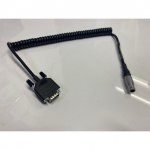- Joined
- Aug 2, 2000
- Messages
- 11,457
Thanks Rob haven't had any contact with them for years , it simply works. I have found MS3 to be a lot better than MS2, more stable.I don't think this is the case anymore Graham. The core code for MS2 and MS3 is no longer available to the public. Users might have some input to their "plug & play" packages, but the days of them taking code contributions seem to have passed.
Jaahn's advice seems right to me. I gave my brother a hand installing a $3k Haltech in his Nissan and, in the process, discovered the bit of dodgy wiring that meant his old EMS setup was out of order. Haltech was nice and simple to install, but we had to fix up the wiring first anyway.
If you then decide to go ahead and upgrade your ECU, here are my thoughts on that.
As far as *learning* about it goes, I think a Megasquirt of some flavour is your best choice. You learn a lot in the process of installation, and you also learn a lot just reading in the msextra forums. My brother's Haltech simply worked. Plug it in. Drive to the dyno place. Not much learnt.
In their range, the cheapest is the Microsquirt, which is pre-assembled, compact, has a nice connector, but limited expansion. For a fuel-only setup, it'd be my choice. I don't think there is a supported way of doing sequential injection with it though.
Megasquirt 2 can be bought pre-assembled, though it's kind of fun soldering up your own. It's a bigger box and more expensive than the Microsquirt, but it runs the same firmware. Two advantages: (1) more room for internal electronic customisation (e.g. sequential injection); (2)you can take out the MS2 processor and replace it with an MS3 processor board (currently US$230). I'm tempted to do this myself, at least for one of my cars.
Megasquirt 3 can also be bought pre-assembled. Costs a fair bit, but it's capable of doing everything you could want, and teaching you all about it as you fall into every trap along the way!
Have fun,
Rob.

